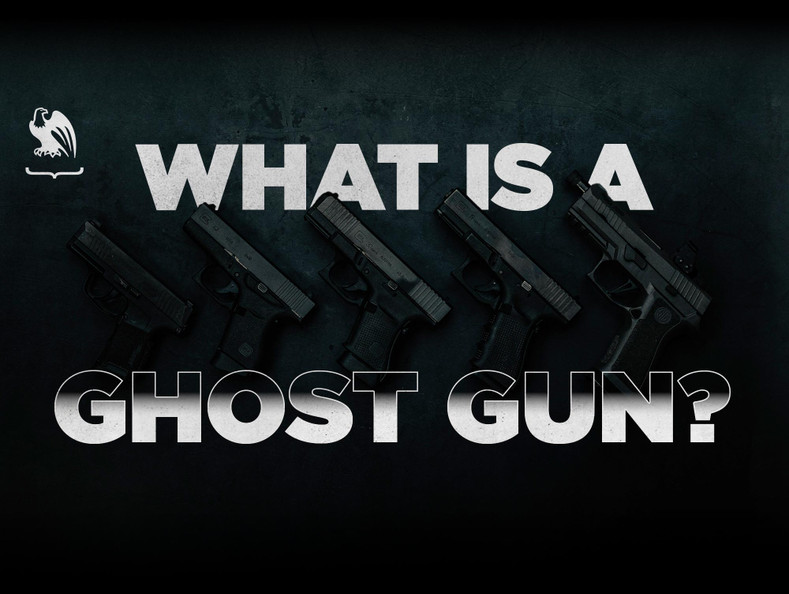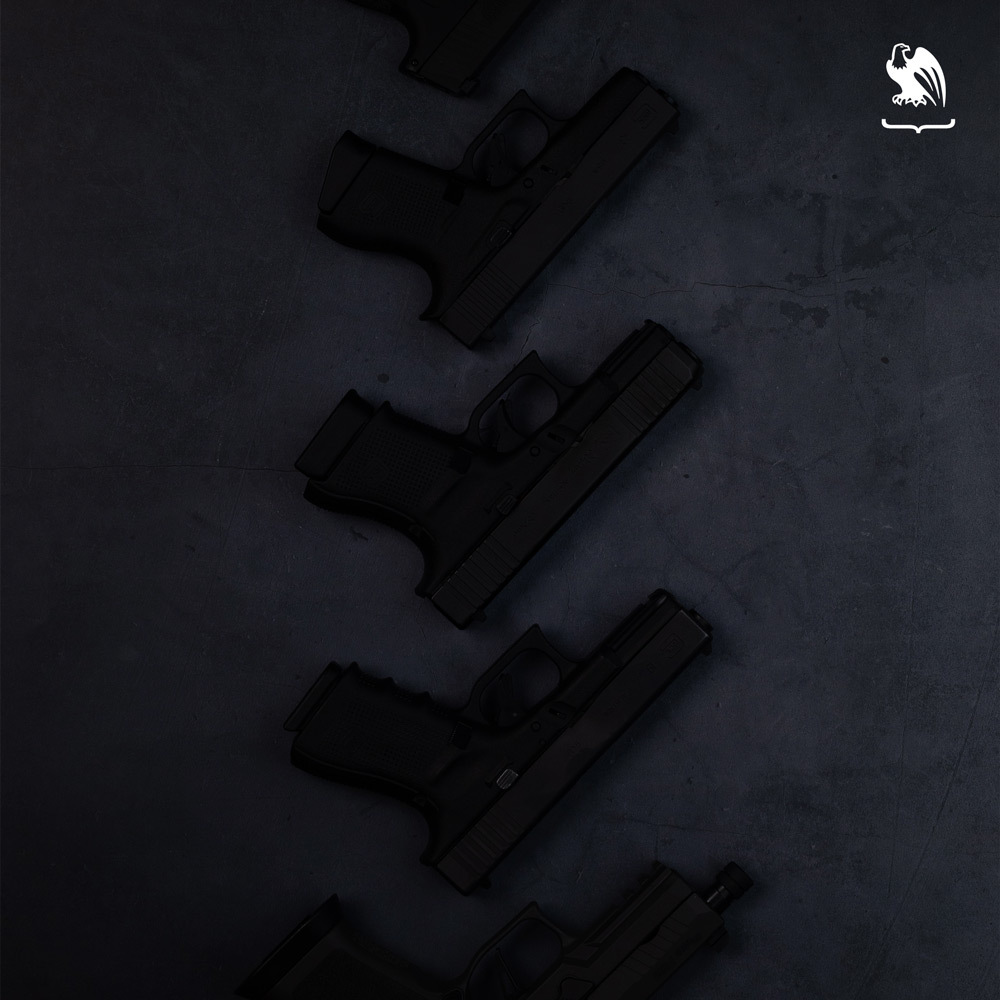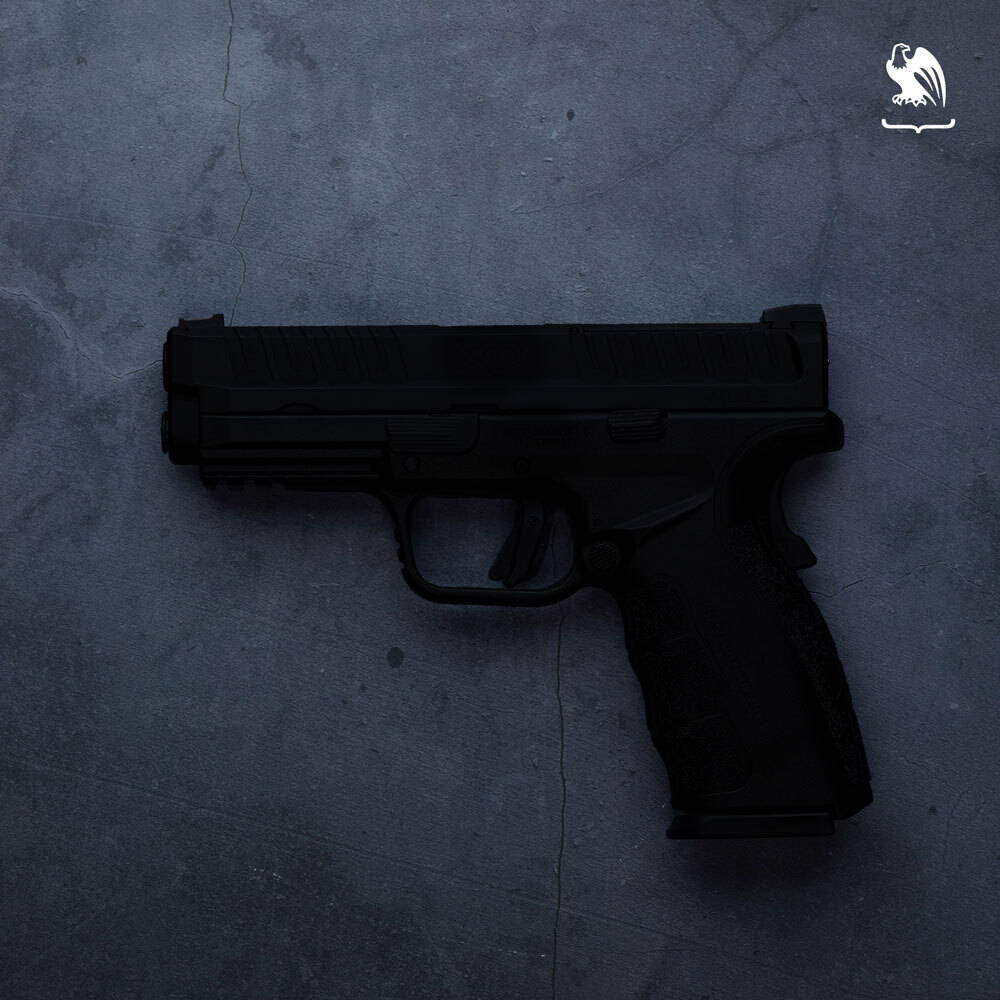What Is a Ghost Gun? Everything You Need to Know About Homemade Firearms

Whether you’re into guns or just keep up with the news, you’ve likely heard the term “ghost gun” in recent years. And, no, we’re not talking about the Ghostbusters’ Proton Pack.
So, what is a “ghost gun,” and are they legal to make?
Ghost guns are homemade firearms made by someone other than a licensed manufacturer. They can be made with a kit, a 3D printer, or by purchasing parts separately, and are often unserialized and unregistered, making them difficult to trace (hence the term, “ghost gun”). Although it is generally legal to make your own firearm, certain rules must be followed, which can vary depending on your location and the methods used.
In this article, we’ll cover what constitutes a ghost gun, how they’re made, and the legality of building these weapons.
Please note that while our goal is to share factual information, this article is for educational and entertainment purposes only. We are not lawyers, and laws are subject to change. Before you build your own firearm, you should always reference federal and state laws directly to ensure you’re doing so legally.
What Is Considered a Ghost Weapon?

Simply put, ghost guns, or “privately made firearms (PMFs)” as they’re classified by the Bureau of Alcohol, Tobacco, Firearms and Explosives (ATF), are guns made by anyone other than a licensed weapons manufacturer. PMFs are commonly referred to as “ghost guns” because they are often not required to be registered or have a serial number, and are therefore difficult to track.
Here is the legal definition of a privately made firearm, per the ATF.
Ghost Gun Definition: “Privately made firearms are firearms (including a frame or receiver) that have been completed, assembled or otherwise produced by a person other than a licensed manufacturer. PMFs are also made without a serial number placed by a licensed manufacturer at the time the firearm was produced.”
This is obviously a fairly broad definition, especially when it comes to debating whether something technically constitutes a “firearm”. To break things down a bit, the ATF has classified 10 different types of PMFs: pistol, revolver, rifle, shotgun, frame or receiver, machine gun conversion device (MCD), destructive device, machine gun, firearm silencer, and “all other weapons”.
While many of these devices are legal to make and own, some of them are not. These rules also vary depending on the state, so it’s important to check before you get started.
Are Ghost Guns Legal in the United States?

Understanding the legality of ghost guns should be your number one priority if you’re thinking of building one, or even if you just want to have educated conversations about them.
Some people, wrongly, believe that ghost guns are completely unregulated. Federally, homemade firearms are legal to make and own for personal use. However, that doesn’t mean you can legally build any type of weapon, any type of way, anywhere in the country. Certain laws and agencies regulate firearm manufacturing in general, including the Gun Control Act, National Firearms Act, and the Undetectable Firearms Act, which apply to ghost guns as well as traditionally manufactured guns. State regulations may also come into play.
So, what exactly is legal and what isn’t?
First and foremost, to make a privately made firearm, you must be someone who is legally permitted to own one in the first place. Certain individuals, including felons, drug users, illegal immigrants, those with a domestic restraining order against them, those with a prior domestic assault conviction, fugitives, and those who were dishonorably discharged from the military, are not allowed to possess a firearm or ammunition, according to federal regulations.
You also need to ensure the firearm you’re making is legal to own. Certain weapons, like machine guns and destructive devices, are illegal to possess without a license. Many firearms are also required to be built within certain specifications. Before you go to build, make sure you know which weapons are regulated by the National Firearms Act and follow any applicable laws. The state you’re in may have additional restrictions on weapons, so be sure you understand the regulations where you live.
It’s also important to understand the difference between an “untraceable” firearm, which is unserialized and unregistered, and an “undetectable” firearm, which does not contain metal and therefore can’t be picked up by metal detectors or X-ray machines. Federally, undetectable firearms are illegal, while untraceable firearms are not.
At the federal level, it is not required to mark a homemade gun with a serial number as long as your intent is to use it for personal use. If you are in the business of selling or trading firearms for profit, you are required to mark them with a serial number as well as possess a license to do so.
So-called “buy-build-shoot” kits, which are pre-manufactured kits containing all, or almost all, of the parts (including a frame or receiver) needed to build your own firearm, are also required to be marked with a serial number by their manufacturer. Because finished frames and receivers are considered “firearms” by the ATF, sellers of these parts, and kits containing these parts, are also now required to have a Federal Firearms License, perform background checks, and keep records of these sales as they would with any assembled firearm.
Once again, keep in mind that some states have their own laws regarding privately made firearms. These regulations are just as important to follow as the federal rules, so be sure to check your local laws directly before attempting to make or possess a ghost gun. No matter what weapon you’re making, it’s your responsibility to verify that you are doing so within the bounds of the law to avoid serious legal repercussions.
Can Ghost Guns Be Traced?
By definition, ghost guns are firearms that are unregistered, unserialized, and unmarked at the time of manufacturing. Though they are extremely difficult to trace, it’s not entirely impossible depending on the circumstances.
Although making guns at home is a tradition long enjoyed by hobbyists and firearm enthusiasts alike, the “untraceable” nature of these weapons also, unfortunately, sometimes makes them appealing to criminals. In fact, incidents of these firearms being recovered and sent to the ATF for tracing have been on the rise since 2017, which the Bureau attributes to both increased criminal use and reporting of these weapons by law enforcement, according to an ATF report.
The rise in ghost firearms being used for criminal activity has prompted much debate and even legislative changes. As of 2022, finished frames and receivers are now considered “firearms” and are required to be marked with a serial number. Those selling these parts, and kits containing these parts, are also required to keep a record of sales and conduct background checks on buyers, just like they would with any other firearm sale. These rules were implemented to make tracking homemade firearms easier for law enforcement. There are still other ways to make ghost guns that do not require the purchase of a finished frame or receiver, but they require more work for the builder.
How Are Ghost Guns Made?

Homemade firearms can be created in a variety of ways. The exact process for how to build a ghost gun depends on what you’re making and how you’re sourcing your parts. Most firearms require the same basic parts, which differ a bit depending on whether you’re making a pistol, rifle, or shotgun, and the specific model you’re crafting.
But what is a ghost gun made out of? There are a few different routes people take when sourcing parts for a homemade firearm. Although you can 3D print parts or purchase them separately through a manufacturer or parts distributor, many people choose to buy a firearm build kit, which contains all or most of the parts you need, for the sake of convenience.
There are a few different types of build kits, according to Daytona Tactical. Most of these kits contain everything but the frame or lower receiver (the part that is legally considered a firearm). A finished frame or receiver is considered a firearm and must be purchased through a licensed seller, which is required to mark it with a serial number.
Many hobbyists opt for what’s known as an “80% kit”. These kits contain all the parts you need, including an unfinished lower receiver that is not considered a fully functional firearm (yet), and are readily available online.
These 80% kits essentially mean that 20% of the building process is still left up to the builder. In order to make a fully functional firearm, the receiver must undergo some additional modifications, including drilling and milling, which can be done at home with the proper tools.
Instead of going through this process, some builders choose to buy a finished receiver through a manufacturer or a stripped receiver from a licensed seller. This makes the process of assembling the rest of the firearm much easier, especially for those with limited tools.
Instead of buying parts, some enthusiasts 3D print them. A truly safe and functional firearm should not be made entirely out of 3D-printed parts, however, as some metal parts, like a barrel, are still required to ensure it functions as intended and meets federal requirements for being “detectable”.
How Reliable Is a 3D-Printed Gun?

A 3D-printed gun is one that was “fully” or partially made from 3D-printed parts. These weapons are operational, but compared to traditional manufactured or other kit- or parts-built ghost firearms, their lifespans are often relatively short. This is especially true for guns made primarily of 3D printed plastic.
Some of these plastic weapons can last anywhere from a few short rounds to a few thousand, depending on a variety of factors: how much of the gun was 3D printed, the model, caliber, print quality, build quality, CAD design, filament used, post-processing, environment, and how it’s used and cared for after it’s made.
It’s also important to understand that “fully” 3D printed guns, in which every single part of the firearm is plastic, simply aren’t long-term functional weapons, according to a VoxelMatters article. At the very least, a metal tube for the barrel is required to prevent the firearm from exploding when fired. Most 3D printed guns also include a few other metal components, even if it’s just a screw or two. These metal parts are used for structure and functionality, as well as because it’s legally required for homemade firearms to be detectable by X-ray machines and metal detectors.
So, while you certainly can make a functional weapon using 3D printed materials, it’s not as simple as downloading a CAD file and screwing everything together. Making a 3D-printed gun takes just as much, if not more, time, attention to detail, and trial and error as any other type of gunsmithing.
That being said, even homemade guns made with quality metal or polymer parts purchased from a manufacturer may be subject to malfunctions if they’re not carefully built to spec. The bottom line is, none of these homemade weapons is guaranteed to be as reliable as one assembled by a trusted manufacturer. It all depends on the quality of the parts and how well they’re put together.
Summary
Ghost guns, otherwise known as homemade firearms or privately made firearms, are guns made by anyone other than a licensed manufacturer. The process for making these weapons can vary, as they can be assembled using separately purchased parts, 3D-printed parts, or even by using a kit.
Although it is generally legal to make your own firearm under most conditions, certain federal laws must be followed, in addition to varying state regulations. Equally important as doing your research on the laws applicable to you is ensuring that you research a design for these weapons and follow the instructions accordingly. Ghost guns made from quality parts can be just as reliable as a manufactured firearm when gunsmithed carefully, and can also be dangerous when done incorrectly.
Whether you’re a hobbyist, gun enthusiast, or you just like to tinker, making a homemade gun can be a fun and educational activity. Before you get started, just be sure to take a look at both federal and state laws directly to ensure you’re doing so safely and legally.
Looking for a reliable, custom-fit holster? Visit our Holsters by Gun Model page to find Kydex holsters tailored to your firearm. Not sure which holster is right for you? Take a look at our interactive comparison tool to view holsters side-by-side and filter by feature. Plus, explore our Resources Page for gear recommendations, concealed carry guides, and exclusive content to elevate your carry system.
This article is provided for informational purposes only. Any activity involving firearms is potentially dangerous and could result in property damage, serious injury, disabling injury or death. All firearms must be handled in a responsible manner and in accordance with applicable law. The author disclaims any responsibility for the accuracy, misuse of, or misinterpretation of information contained in this article.
